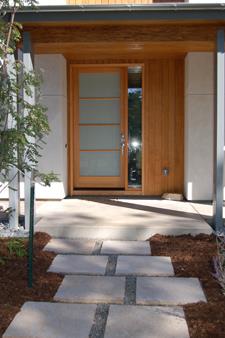
Zero Energy Homes – Affordable Zero Energy and Net Zero Homes Are Now Available and Viable.
Zero Energy Homes—Affordable Zero Energy and Net Zero Homes Are Now Available and Viable.
 Energy… that magical thing that illuminates our world. Few of us actually consider what it takes to generate the power to turn on our lights, run our computers and televisions, or cook our food. The daily “news” today touts “clean energy.” An international summit of 192 countries in Copenhagen met in December 2009 to discuss climate change and clean energy alternatives. It all seems a little abstract, and you might wonder how you as an individual can help the global climate and create clean, renewable energy.
Energy… that magical thing that illuminates our world. Few of us actually consider what it takes to generate the power to turn on our lights, run our computers and televisions, or cook our food. The daily “news” today touts “clean energy.” An international summit of 192 countries in Copenhagen met in December 2009 to discuss climate change and clean energy alternatives. It all seems a little abstract, and you might wonder how you as an individual can help the global climate and create clean, renewable energy.
Fortunately, some innovative developers and builders are implementing solutions to incorporate into your home. If you haven’t heard of “net-zero” and “zero-energy” homes in your location, you will in the near future. In Aiken, SC, and in Boulder, CO, a developer and architect are proving that you can create affordable, energy-efficient homes. Ron Monahan, developer of The Ridge at Chukker Creek in Aiken and Silver Leaf in Boulder, teamed with renowned Colorado architect George Watt to build net-zero or near-net-zero homes that achieve a 70% to 100% reduction in energy bills. These homes have exceeded the LEED (Leadership in Energy and Environmental Design developed by the US Green Building Council) Platinum certifications for green building.
One Developer’s Dream
Monahan’s ideas and personal energy are infectious. He believes in creating affordable homes that generate their own power for everyday people. Monahan has been encouraged by the homebuyer’s response to his net-zero approach, with increasing sales at The Ridge during the economic decline.
Watt and Monahan recently partnered with the Savannah River Site (SRS) in Aiken to create a hydrogen-powered home to be completed in 2010. The home will have photovoltaic solar panels on the roof, which will in part power the house and in part pass energy through an electrolyzer that separates hydrogen from water. The hydrogen will be stored in a fuel cell and the by-product is oxygen.
“This is a fantastic opportunity to apply breakthrough technology to residential homebuilding. It would be hard to bring together this caliber of partnership were it not for the pioneering programs that are taking place in Aiken and in South Carolina,” said Monahan.
It wasn’t hard to convince architect Watt to be involved in designing net-zero homes. Watt said, “Ron and I talked for about two minutes about creating a net-zero project in Aiken. Ron said ‘we need to do this in Aiken.’ I said, ‘yeah, we do.’” And the rest is history. Watt, a carpenter before an architect, built his first solar home in the 1980s and realized then that energy efficiency should be implemented into home design; he’s implemented renewable energy systems ever since.
According to Watt, “Energy efficiency should be seamlessly integrated into the design of a building. It shouldn’t be flashy; it should just fade into the background. A home is a home and should feel comfortable and inviting.” Watt’s goal is to incorporate solar or other renewable sources without being an eyesore.
 What’s the difference between net-zero and zero-energy homes?
What’s the difference between net-zero and zero-energy homes?
Two types of energy-efficient homes are emerging-net-zero and zero-energy. While both types of homes are extremely efficient, there is a slight difference. Zero-energy homes run off the grid. The homes generate enough energy on their own to power all of the homeowner’s needs through photovoltaic, geothermal and soon even hydrogen power. Net-zero homes still operate on the energy grid, but generate enough energy to offset any annual usage through the same renewable energy means. When you own a net-zero home, you purchase energy from your electric company, but then sell back the energy that your home generates over the year.
“Green” Houses vs. Energy Efficiency
It seems that every successful product available today is marketed as “green.” Houses are no different. Often, the price tag on “green” materials is higher because of this marketing. However, it is possible to have an energy-efficient home that is affordable. Research into energy-efficient construction proves beneficial in creating the most efficient homes for the least amount of money.
It’s important to note the differences between “green-washing” and energy efficiency. You don’t have to have a “green” home to be energy-efficient and help reduce your carbon footprint and energy needs. Zero-energy homes may not be considered green in all areas but tend to have a much lower ecological impact in the long run than a “green” building that requires imported energy and/or fossil fuels.
Building a Net-Zero Home
Energy efficiency starts at the base level in home construction, including site plan, passive solar energy, insulation and energy-efficient appliances. According to Watt, “The key is to create a well-insulated building envelope so your energy needs are as low as possible. After you have saved energy everywhere you can in the house and determined what your energy needs will be, then it’s time to incorporate your renewable energy source.”
Site Plan
It wasn’t that long ago (prior to central heating and air) that homes were designed to capitalize on sunlight for passive heating and large porches to capture breezes to cool the home. This same technology still exists today and is the first step in creating an energy-efficient home. Orient the house with its long axis running east/west and utilize daylight to provide natural lighting.
Windows and Porches
Size south-facing overhangs to shade windows in the summer and allow solar gain in the winter. Utilize large porches to create shade for natural ventilation and reduce the need for mechanical cooling. Consider window-glazing techniques for different sides of the house. Use low U-value/low-E in all climates and low solar heat gain (low SHGC) windows in cooling climates.
Insulation
Increase foundation, wall and ceiling insulation. A well-insulated home drastically reduces the needs for heating and cooling. Seal all holes and cracks in walls, floor and ceilings to unconditioned spaces.
Appliances & Lighting
Look for EnergyStar® ratings when specifying and purchasing appliances. Consider tankless water heaters, as they are one of the largest electricity consumers in the home. Front-loading washing machines save energy and water consumption. When choosing lighting options, opt for LEDs and florescent fixtures.
Heating and Air
As stated above, use a passive solar energy. You may also want to consider using a geothermal system, which uses ground-source energy to heat and cool your home. The ground temperature around your house is fairly consistent year-round-approx 50°F in the north and warmer in the southern United States.
Add a Renewable Energy Source
Solar energy or photovoltaic energy captures solar energy and stores it in a battery or sends the energy back to the grid. Most people still think of solar as those unsightly large panels raised on the roof of a home. However, that’s not the case anymore. Major innovation has resulted in lighter, more durable panels as thin as 1/8”. Photovoltaic laminates can adhere directly onto roofing materials without damaging the roof. They even come in solar shingles these days.
George Watt designed a solar system to fit seamlessly into the roof in Boulder, CO, so you cannot tell the solar panels from the roof itself. Many states are even offering tax incentives and rebates to those implementing renewable energy sources into their homes.
If it’s not in your budget initially, you can always have it in your long-term plan and implement a renewable source at a later date.
When Will Net-Zero Reach Mainstream Building?
Smaller builders and developers are currently pushing the envelope to create the most innovative energy-efficient designs available. They are smaller and able to take more risks. Watt believes that as soon as the major builders develop these technologies, it will be available in the general market. The sooner the homebuyer demands this level of efficiency, you’ll see it in your area.
Show Attendee Finds Net-Zero Neighborhood
“It was a misty, dewy morning just before dawn. I could hear the galloping horses snorting as they approached. Just as they burst through the mist, the sun came up. Then, each of the riders came by and said hello. I knew I was home.”
Terry Goad of Maryland said Ideal Living magazine started it all. She had been reading Ideal Living for a few years when she decided to attend a Live South Real Estate Show in the fall of 2009. She was considering relocating, but wasn’t quite sure where. Goad was impressed with the number of communities she found at the real estate show and said, “It was great. They weren’t trying to sell you, but give you the information you needed. I took advantage of one of the discovery packages and headed to Aiken, SC.” At the show, she met with Ron Monahan of The Ridge at Chukker Creek and was very interested in their net-zero homes. Goad said, “I just liked the EnergyStar homes. Everyone should be building an EnergyStar. I’d like to have a home that helps the environment. Anyone can exceed LEED levels if they put enough money in it, but The Ridge exceeds Platinum levels at an affordable price.”
Goad traveled with her sister-in-law to Aiken. She purchased one homesite, and her sister-in-law and brother purchased also.
Everything in Aiken is in close proximity to The Ridge. Goad said, “Now, I go 19 miles to work every day, and it takes me one to one and a half hours to drive. I can’t wait to begin building my new energy-efficient home.”
Receive your complimentary Relocation guide and magazine


